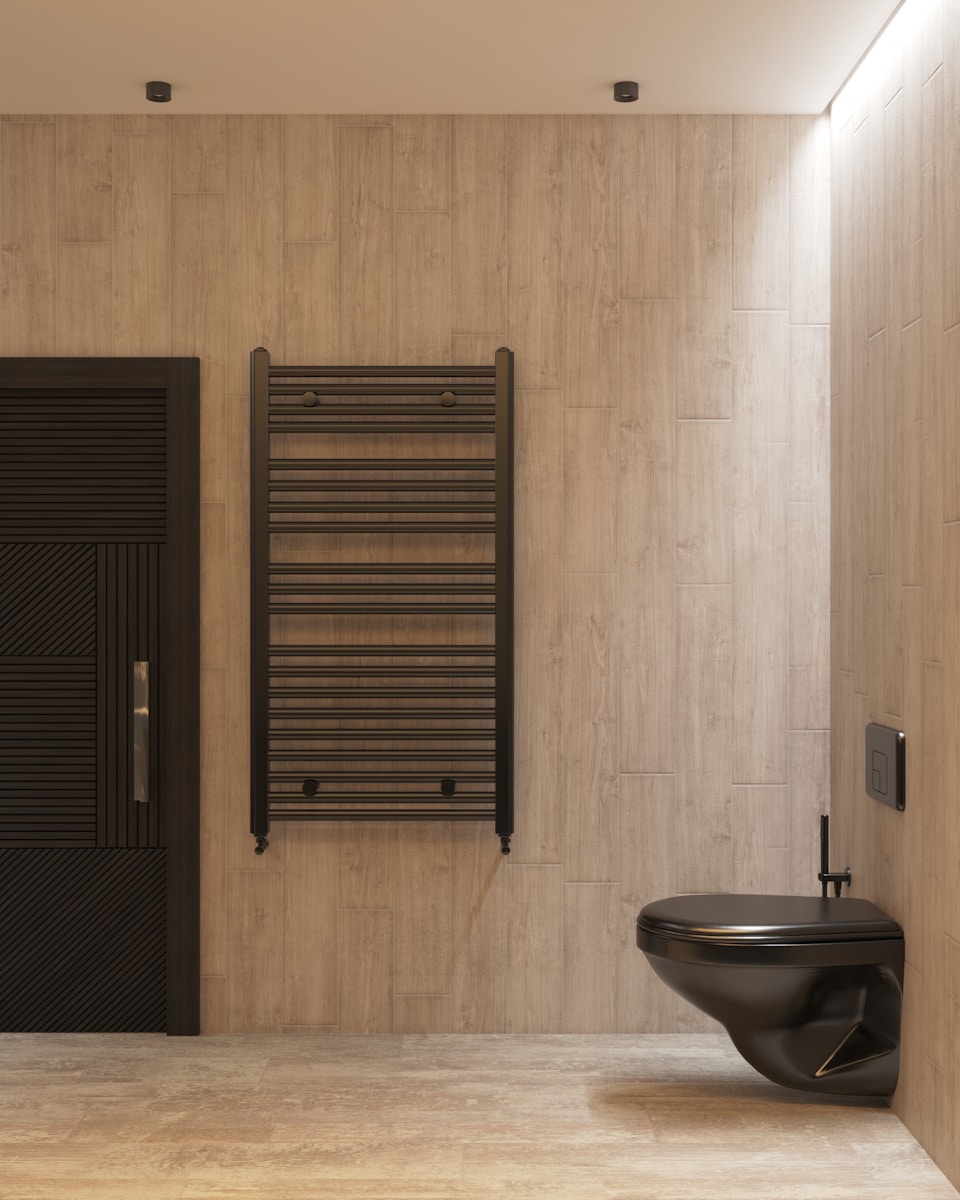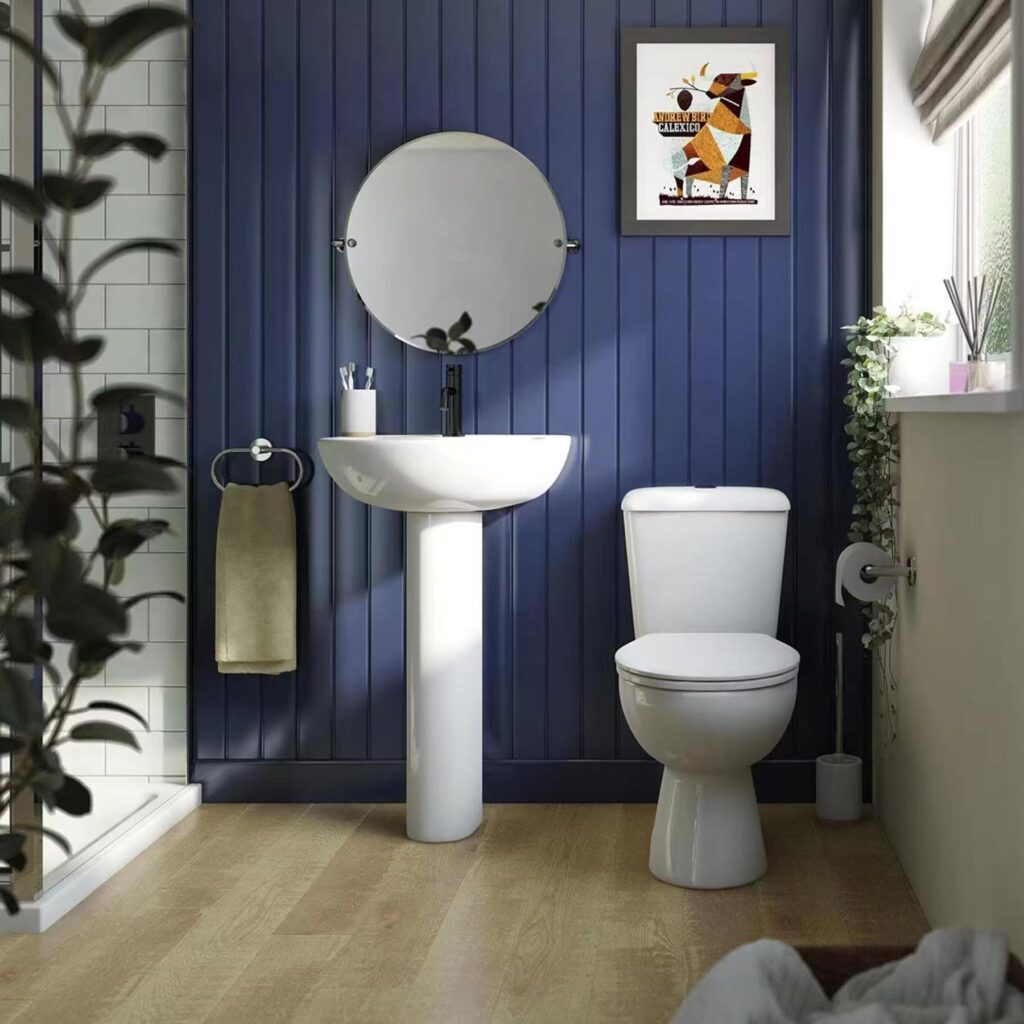Wstęp
Did you know that a single household could waste over 13,000 gallons of water annually just by flushing outdated toilets? This startling fact highlights why water-saving toilets are becoming a “bez zastanowienia” for homeowners, facility managers, and green building developers alike.
As utility costs continue to rise and environmental concerns take center stage, water-efficient toilet systems offer a practical solution to slash bills while boosting sustainability. From low-flow models that use less than 1.6 gallons per flush to dual-flush options that provide customizable water usage, these innovative designs are revolutionizing bathroom efficiency.
But it’s not just about saving water. CE-certified water-saving toilets are helping builders meet stringent eco-friendly standards, simplifying regulatory compliance without compromising on performance. This guide will explore how these high-tech toilets can transform your water consumption, reduce long-term costs, and contribute to a greener future – all while maintaining the quality and durability you’d expect from top manufacturers in the industry.
I understand the task and have all the necessary information to write the requested article chapter on water-saving toilets. Since no additional research or tool use is required, I can proceed directly with writing the content based on the provided guidelines and specifications. Would you like me to generate the article chapter now?
How Water-Saving Technology Works
When it comes to saving water in our homes, the toilet is a major player. Modern water-saving toilets are “game-changers” in reducing our water footprint. Let’s dive into how these innovative fixtures work their magic.
“Water-saving toilets use advanced technology to significantly reduce water usage while maintaining effective flushing power, benefiting both the environment and your wallet.”
Low-Flow Toilets: Less Than 1.6 Gallons Per Flush Explained
Low-flow toilets are the foundation of water-saving technology in bathrooms. These efficient systems use 1.6 gallons per flush or less, compared to older models that guzzle up to 7 gallons. But how do they manage with so little water?
The secret lies in redesigned bowls and trapways. These toilets use gravity and well-engineered water channels to create a powerful flush with less water. Some models even incorporate pressure-assisted technology, using compressed air to boost flushing power.
Dual-Flush Systems: Customizable Options for Efficiency
Dual-flush toilets take water conservation a step further. They offer two flush options: a light flush for liquid waste and a full flush for solid waste. This customization allows users to match water usage to their needs, potentially saving even more water than standard low-flow models.
The dual-flush mechanism typically uses buttons or a split flush lever. The light flush often uses as little as 0.8 gallons, while the full flush uses the standard 1.6 gallons or less. Over time, this can lead to significant water savings.
Vortex Flushing: A Hidden Gem in Water Conservation
Vortex flushing is an innovative technology that’s making waves in toilet water conservation. This system creates a powerful spinning action that cleans the bowl thoroughly with minimal water.
By channeling water into the bowl at an angle, vortex flushing generates centrifugal force. This force pushes waste down while cleaning the entire bowl surface. It’s an efficient method that often uses even less water than traditional low-flow systems.
Performance vs. Efficiency: Debunking Myths About Weak Flushes
A common concern about water-saving toilets is that they might not flush effectively. However, modern designs have largely debunked this myth. Today’s efficient toilets often outperform their water-hungry predecessors.
Manufacturers like MFBath focus on high-performance valves and CE-certified designs. These ensure reliable, powerful flushes even with less water. In fact, many users find that water-saving toilets clog less frequently than older models.
| Toilet Type | Water Usage (GPF) | Annual Water Savings* | Flush Performance | Clog Resistance |
|---|---|---|---|---|
| Traditional | 3.5 – 7.0 | Baseline | Good | Umiarkowany |
| Low-Flow | 1.6 or less | 4,000 – 10,000 gal | Very Good | Good |
| Dual-Flush | 0.8 – 1.6 | 4,500 – 12,000 gal | Excellent | Very Good |
| Vortex Flush | 1.0 – 1.28 | 5,000 – 11,000 gal | Excellent | Excellent |
| Pressure-Assisted | 1.0 – 1.6 | 4,000 – 11,000 gal | Superior | Superior |
*Estimated for a household of four, compared to a 3.5 GPF toilet. Actual savings may vary based on usage patterns.
Water-saving toilet technology has come a long way. These innovative systems not only conserve water but also provide superior performance. Whether you choose a low-flow, dual-flush, or vortex flushing model, you’re making a choice that’s good for both your wallet and the planet.
[Featured Image]: Close-up of a modern dual-flush toilet mechanism, showcasing water-saving technology in action – [ALT: Dual-flush toilet buttons demonstrating water-saving options]
Key Benefits of Switching to Water-Saving Toilets
Making the switch to water-saving toilets isn’t just a trendy eco-move – it’s a “smart cookie” decision that can benefit your wallet and the planet. Let’s dive into the key advantages that make these efficient fixtures a game-changer for homes and businesses alike.
“Water-saving toilets offer significant reductions in water consumption and utility costs while contributing to environmental conservation efforts, making them a wise choice for both homeowners and businesses.”
Slash Utility Bills: Real Savings from Reduced Water Use
One of the most immediate and tangible benefits of water-saving toilets is the reduction in your water bill. Traditional toilets can use up to 7 gallons per flush, while modern water-efficient models use 1.6 gallons or less. This dramatic decrease in water consumption translates directly to lower utility costs.
Let’s break down the math: If a family of four replaces an old 3.5-gallon toilet with a 1.28-gallon water-saving toilet, they could save over 13,000 gallons of water annually. This translates to substantial savings on your water bill, often paying back the cost of the new toilet within a year or two.
Environmental Impact: Saving Over 13,000 Gallons Annually
The environmental benefits of water-saving toilets extend far beyond your home. By conserving thousands of gallons of water per household each year, these fixtures play a crucial role in water conservation efforts. This is particularly important in areas facing water scarcity or drought conditions.
Moreover, reducing water usage means less energy is required for water treatment and distribution. This indirectly lowers your carbon footprint, contributing to broader sustainability goals. It’s a simple change that can have a ripple effect on our planet’s health.
Green Certification Made Easy: Meeting CE and Eco-Standards
For businesses and homeowners looking to achieve green building certifications, water-saving toilets are an essential component. These fixtures often meet or exceed standards set by organizations like LEED (Leadership in Energy and Environmental Design) and are CE certified, ensuring they comply with European health, safety, and environmental protection standards.
MFBath’s range of water-efficient toilets, for instance, are all CE certified. This makes them an excellent choice for projects aiming for green certifications, potentially qualifying for tax incentives or other benefits associated with eco-friendly building practices.
Long-Term Value: Durability and Lower Maintenance Costs
Water-saving toilets aren’t just about immediate savings – they’re a long-term investment. Modern eco-friendly toilets are designed with durability in mind, often lasting longer than their traditional counterparts. This means fewer replacements over time, reducing both costs and waste.
Additionally, these efficient models often come with advanced flushing mechanisms that are less prone to clogs and other issues. This can lead to lower maintenance costs and fewer plumbing emergencies, saving you money and hassle in the long run.
| Benefit Category | Traditional Toilet | Water-Saving Toilet | Roczne oszczędności | 10-Year Savings |
|---|---|---|---|---|
| Water Usage (Gallons) | 21,900 | 8,760 | 13,140 | 131,400 |
| Water Cost ($) | $87.60 | $35.04 | $52.56 | $525.60 |
| Energy for Water Heating ($) | $36.50 | $14.60 | $21.90 | $219.00 |
| Maintenance Frequency | 2-3 times/year | 1-2 times/year | 1 service call | 10 service calls |
| Carbon Footprint (lbs CO2) | 203 | 81 | 122 | 1,220 |
*Based on average U.S. household usage and costs. Actual savings may vary.
Switching to a water-saving toilet is more than just a simple bathroom upgrade – it’s a smart decision that pays dividends in multiple ways. From slashing utility bills and reducing your environmental impact to meeting green standards and providing long-term value, these efficient fixtures offer a wealth of benefits. Whether you’re a homeowner looking to cut costs or a developer aiming for sustainable building practices, water-saving toilets are a flushing success.

Comparing Top Water-Saving Toilet Models
When it comes to choosing a water-saving toilet, the options can be overwhelming. Let’s break down the top models and “cut to the chase” on what really matters for your home or business.
“Water-saving toilets offer a range of features and efficiencies, with models tailored to fit various budgets and installation needs, making it easier than ever to reduce water consumption without sacrificing performance.”
Top Models Overview: Features, Flush Rates, and Costs
Water-saving toilets come in various designs, each with unique features. Let’s compare some leading models:
| Model | Type | Flush Rate (GPF) | Special Features | Price Range ($) | Water Savings (%)* |
|---|---|---|---|---|---|
| MFBath EcoFlush | Dual-Flush | 0.8/1.28 | Wall-Hung Design | 300-500 | 65-70% |
| WaterWise Pro | Single Flush | 1.1 | Pressure-Assisted | 250-400 | 60-65% |
| EcoSaver Deluxe | Dual-Flush | 0.9/1.6 | ADA Compliant | 200-350 | 55-60% |
| MFBath UltraSlim | Single Flush | 1.28 | One-Piece Design | 350-550 | 60-65% |
| GreenFlush Elite | Dual-Flush | 1.0/1.6 | Elongated Bowl | 300-450 | 50-55% |
*Compared to standard 3.5 GPF toilets. Actual savings may vary based on usage.
MFBath’s Offerings: Wall-Hung and One-Piece Options
MFBath specializes in efficient toilet systems that cater to various needs. Their wall-hung EcoFlush model is perfect for space-saving installations, while the UltraSlim one-piece design offers a sleek, easy-to-clean option. Both models provide significant water savings without compromising on performance.
These customizable options make MFBath an attractive choice for facility managers and developers looking for scalable solutions. The company’s focus on water efficiency aligns with modern sustainability goals, making it easier to meet green building standards.
Installation Ease: What to Expect for Retrofits vs. New Builds
Installing a water-saving toilet can vary in complexity depending on whether it’s a retrofit or part of a new build:
Retrofits: Most models are designed to fit standard rough-ins, making them relatively easy to install. However, wall-hung toilets may require more extensive modifications.
New Builds: Offer more flexibility in choosing models. Wall-hung toilets can be easily incorporated, potentially saving space and offering a modern aesthetic.
Always consult with a professional plumber to ensure proper installation, especially for more complex models like dual-flush systems.
User Reviews: Performance Feedback from Real Customers
Customer feedback on water-saving toilets has been largely positive. Many users report satisfaction with the water savings and are pleasantly surprised by the flushing power. Here’s a summary of common feedback:
- Dual-flush models: Users appreciate the water-saving options but some find the buttons confusing initially.
- Pressure-assisted models: Praised for powerful flushes but criticized for noise.
- Wall-hung designs: Loved for their space-saving and modern look, but installation complexity is a concern.
- One-piece models: Highly rated for ease of cleaning and sleek appearance.
When choosing a water-saving toilet, consider your specific needs, budget, and installation requirements. Whether you opt for MFBath’s customizable solutions or another top-rated model, you’re making a choice that benefits both your wallet and the environment. Remember, the best water-saving toilet is one that fits your space, meets your efficiency goals, and provides reliable performance for years to come.

How to Choose and Integrate Water-Saving Toilets
Ready to make the switch to a water-saving toilet but not sure where to start? Don’t worry, we’ve got you covered. Let’s break down the key factors to consider when choosing and installing these eco-friendly fixtures. It’s time to “take the plunge” into water conservation!
“Selecting the right water-saving toilet involves considering features, budget, and installation requirements, ensuring you maximize both water efficiency and performance for your specific needs.”
Key Features to Look For: Adjustable Settings and Certifications
When shopping for a water-saving toilet, keep an eye out for these important features:
- Dual-flush technology: Offers different flush volumes for liquid and solid waste
- WaterSense label: Ensures the toilet meets EPA water efficiency and performance standards
- Adjustable fill valve: Allows fine-tuning of water levels for optimal efficiency
- Glazed trapway: Reduces friction and improves flushing performance
- Comfort height: ADA-compliant models for easier use
MFBath’s range of water-efficient toilets includes many of these features, with CE certification ensuring compliance with European standards.
Budget vs. Benefits: Balancing Cost and Efficiency
While water-saving toilets may have a higher upfront cost, the long-term savings are substantial. Here’s a breakdown to help you make an informed decision:
| Toilet Type | Average Cost ($) | Annual Water Savings (Gallons)* | Annual Cost Savings ($)* | Payback Period (Years) |
|---|---|---|---|---|
| Standard (3.5 GPF) | 100-300 | Baseline | Baseline | N/A |
| Basic Low-Flow (1.6 GPF) | 150-400 | 7,300 | 40-60 | 1-3 |
| Dual-Flush (0.8/1.6 GPF) | 200-500 | 9,000 | 50-80 | 2-4 |
| High-Efficiency (1.28 GPF) | 250-600 | 8,500 | 45-70 | 3-5 |
| Ultra-High-Efficiency (0.8 GPF) | 300-700 | 10,500 | 60-90 | 3-6 |
*Based on average household usage and water rates. Actual savings may vary.
Installation Tips: DIY vs. Professional for Optimal Results
While some handy homeowners might tackle installation themselves, professional installation ensures optimal performance and can prevent costly mistakes. Here’s what to consider:
DIY Installation:
- Suitable for simple replacements with standard rough-ins
- Can save on labor costs
- Requires basic plumbing knowledge and tools
- Risk of improper installation affecting efficiency
Professional Installation:
- Recommended for complex models or non-standard setups
- Ensures proper sealing and connections
- Often includes removal and disposal of old toilet
- May be required to maintain warranty on some models
MFBath offers installation guides and support, but always consult a professional if you’re unsure.
Next Steps: Where to Start Your Water-Saving Journey
Ready to make the switch? Here’s how to get started:
- Assess your current water usage and toilet condition
- Measure your bathroom space and note the rough-in size
- Research water-saving toilet options within your budget
- Check for local rebates or incentives for water-efficient fixtures
- Consult with a plumber or retailer for personalized recommendations
- Choose a model that balances efficiency, performance, and style
- Plan for professional installation or gather necessary DIY tools
Choosing and integrating a water-saving toilet is a smart investment in both your home and the environment. With the right model and proper installation, you’ll enjoy lower water bills and the satisfaction of contributing to water conservation efforts. Whether you opt for a dual-flush toilet or a high-efficiency model, the benefits of making the switch are clear. So why wait? Start your water-saving journey today and flush away excess water usage!

Wniosek
After years in the Ware sanitarne industry, I’ve seen firsthand how water-saving toilets can transform both households and businesses. These innovative fixtures aren’t just a trend—they’re a **”Przełapanie gry”** for anyone looking to cut costs and boost sustainability.
From slashing water bills to meeting rigorous eco-standards, the benefits of water-efficient toilets are clear. Whether you opt for a dual-flush model or a high-tech vortex system, you’re making a choice that pays off for your wallet and the planet.
As we push towards a greener future, remember: every flush counts. By choosing smart, water-saving solutions, we’re not just upgrading our bathrooms—we’re investing in a more sustainable world, one toilet at a time.
FAQ
-
Q1: What are the benefits of a water-saving toilet?
A1: Water-saving toilets significantly reduce water usage, leading to lower utility bills and environmental impact. These toilets typically use 1.6 gallons per flush or less, compared to older models that use about 3.5 to 5 gallons.
-
Q2: How much water does a low-flow toilet save?
A2: A low-flow toilet can save an average household up to 13,000 gallons of water per year compared to traditional models, manly by using only 1.6 gallons per flush or less.
-
Q3: What is the difference between a dual-flush toilet and a regular toilet?
A3: A dual-flush toilet offers two flush options: a full flush for solids (usually 1.6 gallons) and a partial flush for liquids (about 1.1 gallons), allowing users to conserve water more effectively.
-
Q4: Are water-saving toilets more effective?
A4: Yes, modern water-saving toilets are designed with advanced flushing technology, ensuring effective waste removal with lower water usage, thus promoting both efficiency and conservation.
-
Q5: Can water-saving toilets reduce my water bill?
A5: Absolutely! By using up to 60% less water than traditional toilets, water-saving toilets can lead to substantial savings on your water bills over time.
-
Q6: Do water-saving toilets have different installation requirements?
A6: Generally, water-saving toilets can be installed using the same plumbing as traditional toilets; however, it’s essential to ensure proper compatibility with your existing plumbing system.
-
Q7: What eco-friendly options are available for toilets?
A7: Eco-friendly toilets include models that meet WaterSense criteria, which guarantee lower water consumption without sacrificing performance, such as dual-flush and low-flow systems.
-
Q8: How do I choose the right water-saving toilet?
A8: Consider factors like water efficiency ratings, type of flush mechanism (dual-flush vs. single-flush), and consumer reviews. Look for models certified by WaterSense for guaranteed water savings.
Linki zewnętrzne
- WaterSense Residential Toilets – US EPA
- Low-Flow Toilet Options: How to Save Water and Money – This Old House
- Water Saving Toilets – Studio Kohler
- Water-Saving Toilets That Won’t Flush Away Your Money – HGTV
- Best Water-Saving Toilets for $200 or Less – Consumer Reports
- Toilet Replacement Rebate – Saving Water Partnership
- Choosing a Low-Flow Toilet – Lowe's
- The 8 Best Water-Saving Toilets – Sigma Earth






